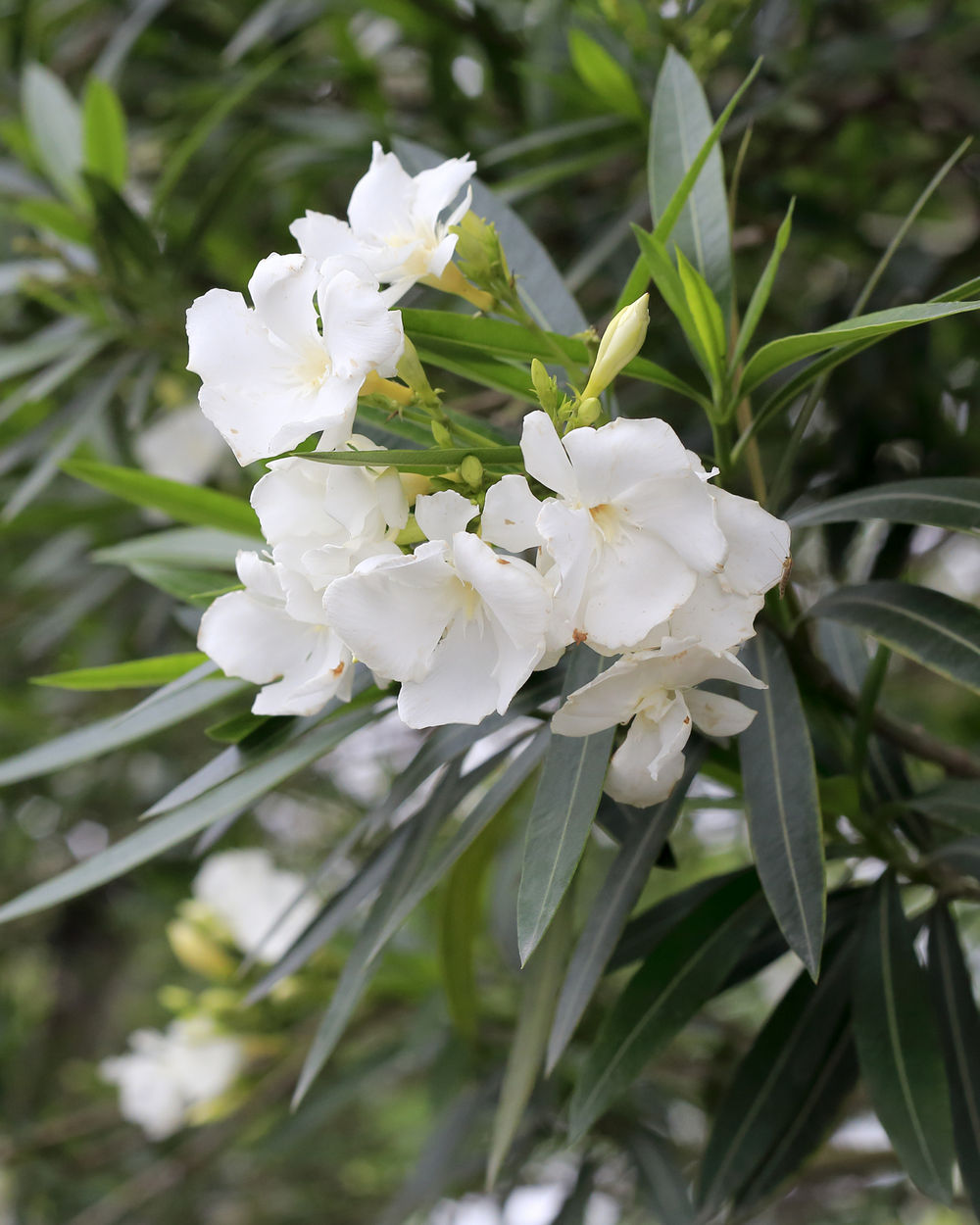The White Oleander Plant: A Beautiful And Toxic Beauty
The white oleander plant is a beautiful and toxic beauty. It is a popular ornamental shrub or small tree that is known for its fragrant white flowers. However, all parts of the plant are poisonous, and even a small amount can be fatal.
The white oleander plant is native to the Mediterranean region, but it is now grown in warm climates around the world. It is a fast-growing plant that can reach heights of up to 15 feet. The leaves are glossy green and the flowers are white, pink, or red. The flowers bloom in the summer and fall.
The white oleander plant is toxic because it contains cardiac glycosides. These are chemicals that can affect the heart and nervous system. Symptoms of poisoning can include nausea, vomiting, diarrhea, headache, dizziness, and seizures. In severe cases, poisoning can lead to coma and death.
The white oleander plant is a serious threat to children and pets. Children are especially vulnerable to poisoning because they are curious and may eat the leaves or flowers. Pets can also be poisoned if they eat the plant.
If you think that you or someone you know has been poisoned by the white oleander plant, it is important to seek medical attention immediately. There is no antidote for poisoning, but treatment can help to prevent serious complications.
Main Content
In addition to its toxicity, the white oleander plant also has some medicinal uses. In traditional Chinese medicine, the plant has been used to treat a variety of conditions, including leprosy, heart disease, and snake bites. However, it is important to note that the medicinal uses of the white oleander plant are not well-studied and can be dangerous.
The white oleander plant is also a good air purifier. It can help to remove toxins from the air, such as formaldehyde and benzene. This makes it a popular choice for planting near homes and businesses.
Conclusion
The white oleander plant is a beautiful and toxic beauty. It is important to be aware of the dangers of this plant and to take precautions to keep children and pets safe. If you have the white oleander plant in your garden, it is important to keep it out of reach of children and pets. You should also wear gloves when handling the plant.
The white oleander plant is a beautiful and versatile shrub that can be grown in a variety of climates. It is known for its large, fragrant flowers that bloom from early summer to mid-autumn. However, the white oleander is also a poisonous plant, and its leaves, stems, and flowers can all be fatal if ingested.
If you are interested in learning more about the white oleander plant, I recommend visiting the website Garden Wiki. This website provides detailed information about the plant's history, cultivation, and toxicity. It also includes a wealth of photos and illustrations that can help you identify the white oleander plant in the wild.
I would also like to caution you that the white oleander plant is not suitable for all gardens. If you have young children or pets, it is best to avoid planting this plant in your yard.
FAQ of white oleander plant
Q: How do I grow white oleanders?
A: White oleanders are relatively easy to grow, but they do require some specific conditions. They need full sun and well-drained soil. They are also drought-tolerant, but they will need more water during the hot summer months. White oleanders can be planted in the spring or fall.
Q: How do I care for white oleanders?
A: Once your white oleanders are established, they are relatively low-maintenance. You will need to water them regularly, especially during the summer. You should also fertilize them once a year in the spring. In the winter, you can prune your white oleanders to shape them or to remove any dead or diseased branches.
Q: Are white oleanders poisonous?
A: Yes, white oleanders are poisonous. All parts of the plant contain a toxin called oleandrin, which can be fatal if ingested. If you have children or pets, it is important to keep white oleanders out of their reach.
Q: What are the signs of oleander poisoning?
A: The symptoms of oleander poisoning can vary depending on the amount of toxin ingested. However, some common symptoms include nausea, vomiting, diarrhea, abdominal pain, headache, dizziness, and seizures. In severe cases, oleander poisoning can lead to death.
Q: What should I do if I think my child or pet has ingested oleander?
A: If you think your child or pet has ingested oleander, it is important to seek medical attention immediately. There is no specific antidote for oleander poisoning, but treatment may include activated charcoal, gastric lavage, and supportive care.
Image of white oleander plant
5 different images of "white oleander plant" from Pinterest:
- Image 1: A close-up of a white oleander flower, showing its delicate petals and long stamens.

- Image 2: A full-size white oleander plant, showing its lush green leaves and tall, slender branches.

- Image 3: A white oleander hedge, providing a beautiful backdrop for a garden.

- Image 4: A white oleander tree, its branches laden with flowers.
- Image 5: A white oleander in bloom, its flowers filling the air with a sweet fragrance.

Post a Comment for "The White Oleander Plant: A Beautiful And Toxic Beauty"